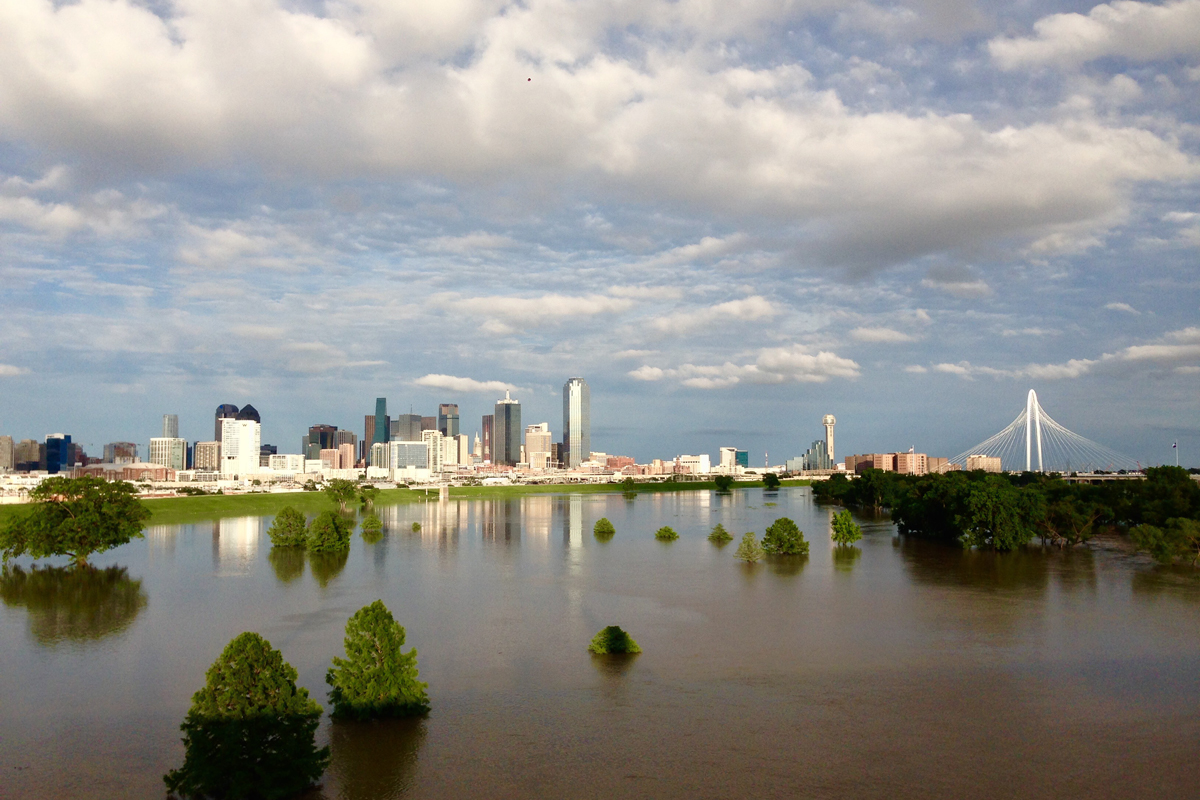This article is part of series on the Connected City Design Challenge, which sought proposals for rethinking the connection between downtown Dallas and the Trinity River. For more articles about the project, click here.
In 2013, the city of Dallas joined up with three of the municipality’s most well-known cheerleading organizations to link arms and create a vision on how to better link downtown to the Trinity River. They orchestrated a competition called The Connected City Design Challenge. It would be between architects, designers, and urban planners. Organizers eventually settled on three renowned firms as the finalists to create concepts. Now 2017, the city doesn’t have much to show for it, and one councilman suspects the contest quietly met its demise.
“It was as I feared and just another of the Groundhog Days of the many Trinity debates: great minds are tasked with producing great solutions, but the moment the great minds question the Underwater Zombie Tollroad, they are thanked with great fanfare, paid handsomely, and their work put on a shelf,” wrote councilman Philip Kingston in an email, whose District 14 includes Downtown, East Dallas, Oak Lawn, and Uptown. “It did coin the term Trinity Hinterlands, which I’m the only person still using.” (A note on that quote: It’s not clear how much, if anything, the participants were paid.)
The Dallas CityDesign Studio paired with the Trinity Trust Foundation (which actually funded the studio with a grant in 2009), Downtown Dallas Inc., and the Real Estate Council Federation to evaluate the entrants. They selected the global firm OMA-AMO, the Spanish Ricardo Bofill Taller de Arquitectura, and Boston’s Stoss + SHoP, which won the competition. Featured prominently in the renderings on its website is—guess what—a sprawling, multi-lane toll road between the levees. It’s featured prominently in architectural renderings on the firm’s website. And that’s seemingly all that exists of the project. A few pictures. If it wasn’t for the them, it would be almost as if The Connected City never existed.
Which is bizarre considering the fanfare four years ago: The Nasher Sculpture Center held a design symposium on the Connected City competition. The finalists unveiled their designs during a month of programming at the Dallas Museum of Art. And now, nobody’s saying a word. Stoss + SHoP didn’t respond for multiple requests for comment, and neither did Brent Brown, the founding director of the CityDesign Studio.
At this point, it’s easy to get confused and forget about all the proposed plans for the Trinity. There is seemingly a new one semiannually. Remember the Dream Team? The underpass juggler? That fancy model rolled out in 2016? We’re sitting on money given to the city from wealthy donors, folks like Annette Simmons and Deedie Rose. Even former mayor Ron Kirk makes an appearance every now and then. And we can’t forget the ever-present specter of the toll road. That’s a lot—and it’s just a recent summary of the two-decade old saga surrounding the Trinity. You’re forgiven if you’ve forgotten about The Connected City. Kingston argues that that’s the point.
But the goals of the project shouldn’t be ignored. The Connected City Design Challenge at least offered several feasible possibilities. Stoss + SHoP offered a grand vision for the west side of downtown with the goal of stitching the urban core to the largest natural feature in the city. Their Hyper Density/Hyper Landscape plan created three distinct neighborhoods with alternating greenspace and urban forests. It also called for daylighting the original route of the Trinity as the centerpiece of the transformation, flush with wetlands and gardens as well as public spaces connecting the neighborhoods. If successfully pulled off, the development would have vastly increased the number of parks and the walkability of that side of the downtown. That’s something the city has been unsuccessfully trying to do for years.
As the 21st century progresses, the necessity of greenspace, connectivity, and urbanism are becoming more important to the vitality of modern cities. As ambitious as the Connected City project was, it could’ve served as a catalyst to Dallas’ future. Unfortunately, it faced a number of challenges from the moment it was proposed, not the least of which being the quagmire of concrete on the west side of downtown.
And that’s what we see today. The southwest corner of downtown is bustling with construction. But it’s construction on the highways. Those 20th century beacons of supposed freedom have divided and decimated urban centers. Any design, no matter how well thought out, was destined to run head first into our past. In the end, we have to ask ourselves: what was the point of the Connected City Design Project? Was it really just another exercise in futility as Kingston suggests? Was it merely foreshadowing the “Dream Team” and their meander?
That’s the cynical view, at least. And sadly, for all the aspirations of the city, it’s that view that has come to pepper the narrative. Why all the smoke and mirrors? Are our grand plans simply unfeasible? If so, who stands to benefit from the deception? It’s certainly not the citizens. Four years on, the Connected City looks like it has been nothing more than a big waste of time. A few snazzy renderings, public official appearances, lectures, and then poof! Nothing. But then, sadly, that’s par for the course where the Trinity is concerned.





